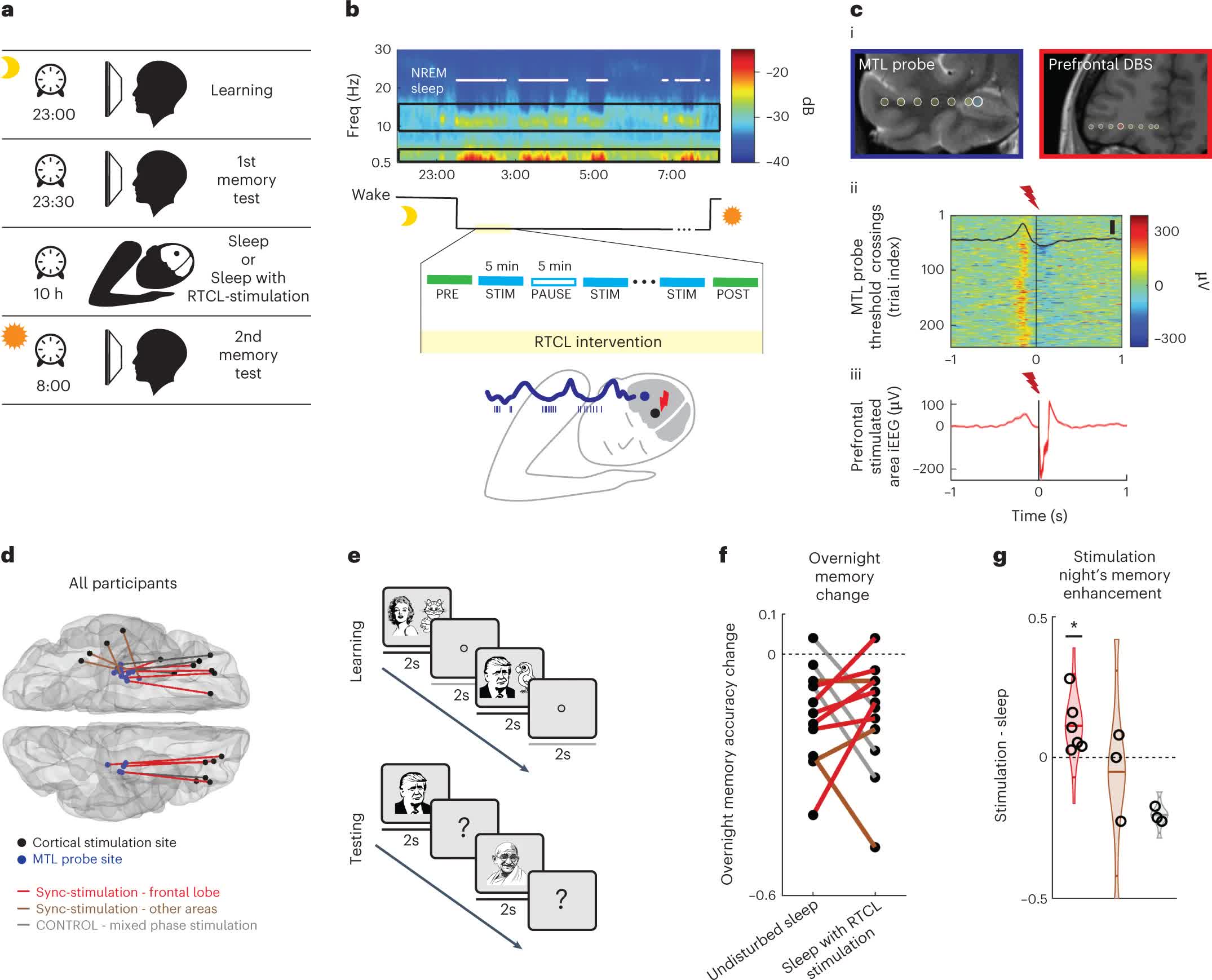[ad_1]
In context: Epilepsy is a neurological disorder caused by abnormal and pointless electrical discharge in neurons. The condition can have severe effects on brain activity and memory function, but scientists are now proposing to “zap” the brain with even more (albeit controlled) electricity to restore its normal mnemonic functionality.
Researchers from the University of California, Los Angeles, and Tel Aviv University have developed a novel method to stimulate proper mnemonic activity in the brain of people affected by severe epilepsy. The study involved a small group of epileptic patients, but scientists are optimistic about the fact that the new approach could treat other issues as well.
The method conceived by Dr. Itzhak Fried, a professor of neurosurgery at the University of California, and his colleagues involves providing a bit of electric stimulation in two different areas of the brain. The goal was to synchronize the activity in the hippocampus and the prefrontal cortex to strengthen memory consolidation in the brain.
The patients were provided with electrodes in their brain so researchers could both evaluate and alter their brain rhythms. The study backs decades of research on animals about the importance of rhythm and synchrony in the brain for forming long-term memories, the researchers explain, with electric stimulation provided during non-REM sleep when the brain is theoretically busy creating new synapses to strengthen fresh memories.
The patients were involved in a “celebrity pet” memory test, in which they were shown a series of images that matched a celebrity with a specific animal before sleep. Later in the morning, they had to remember which animal went with a particular celebrity. During sleep, neurons fire in rhythmic patterns; when two brain areas synchronize their firing patterns, the theory dictates, they are able to communicate.
The hippocampus and the prefrontal cortex are able to synchronize during non-REM sleep phases, which seemingly helps the brain turn daily, transient experiences into memories that could last weeks, years, or maybe a lifetime.
The researchers measured the activity in one area on the brain (the hippocampus), and then stimulated a different area (the prefrontal cortex). Patients who got their brain stimulated experienced improved synchronization of the two brain areas. After waking up, they also scored better in the celebrity pet test – with improvements ranging from 10 percent to 20 percent, and up to 80 percent in some cases.
The study backs the idea that electric stimulation could help restore better mnemonic function to people with severe brain impairments, while external electric “zapping” would likely provide no benefits for normal working brains. The idea for a better synchronization could also help with brain conditions other than epilepsy, the researchers say, as brain rhythms are not specific to memory formation. They could also play an important role for other basic brain functions such as mood and emotion regulation.
[ad_2]
Source link
